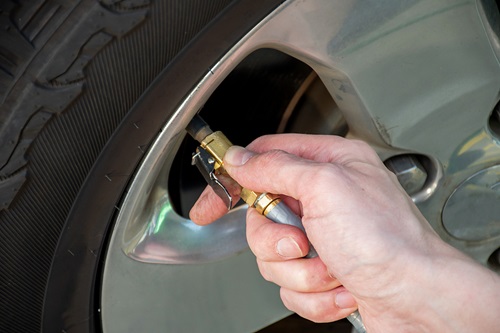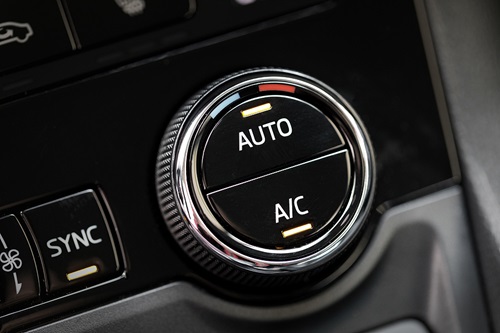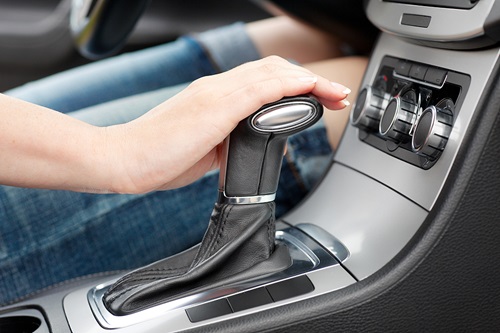With the recent rise in the cost of fuel at the pumps, many of us will be trying to find ways to stretch our fuel budgets a little further. You could buy an electric car, we suppose, or maybe trade down to a smaller, more efficient model, but the cost of changing your car will often outweigh the savings you’ll make on fuel. Much better, then, to extract the maximum efficiency from the car you currently have. Thankfully, there are some handy ways to do just that…
Tyres

When it comes to what a driver can do to maximise their fuel economy, as is so often the case when it comes to motoring questions, the answer is a simple one — tyres. Simply making sure that your tyres are pumped up to the correct pressures can save you as much as ten per cent in fuel consumption. However, don’t be tempted to pump the pressures way, way up — yes, a higher pressure tyre will have less rolling resistance, and will give you a fractional improvement in fuel economy, but by over-inflating a tyre you’re reducing its contact patch with the road, and so are compromising on safety.
Aerodynamics.
All the publicity about Formula One designer Adrian Newey leaving the Red Bull Racing team is down to one thing — aerodynamics. Newey is the all-time expert at working out how air flows around and over a racing car, and making sure that said racing car is making the fullest use of that air. You don’t have to be Newey, or be working with an F1 budget, to make some aerodynamic improvements to your car, though. Simply taking off things like roof racks and roof boxes when you’re not using them will help hugely, as will checking around the bodywork for any loose bits of trim or damaged bodywork. Which brings us to another question about windows…
Windows down or aircon on?

There’s a great debate about whether you’re better off using the air conditioning in your car to keep cool on a warm day (which allows you to keep your windows up for better aerodynamics) or if you’re better off winding down a window and leaving the power-sapping air conditioning compressor switched off. Helpfully, there’s a simple answer to this and it’s 80km/h. Above that speed, you’re better off with the windows up and the air conditioning going (and it helps that modern air conditioning systems are far more efficient than they used to be). Below that speed, you’re fractionally better off opening a window to let some cooling air in. Heating is far less of an issue — more than 60 per cent of the energy of each litre of diesel or petrol you burn is wasted as heat anyway, so using some of that to warm up the car on a cold day is actually quite efficient.
Lose some weight.
Most of us could stand to lose a few pounds, but when it comes to saving fuel that goes double. Every single extra item that’s in your car adds weight, and that weight has to be hauled up to speed each time you accelerate, increasing your fuel consumption. So, aside from maybe buying some Weight Watchers memberships for your passengers, you could go through the boot and take out stuff that you don’t really need to keep with you, and maybe consider packing a little lighter for longer journeys. Have you noticed that cars tend not to come with spare wheels anymore? That’s because those wheels add weight, and so car companies leave them out in order to get better scores on the official fuel consumption tests.
Slow down.
It’s almost stupidly simple, but slowing down will really save on your fuel. If you drove along main roads at 80km/h instead of 100km/h you’ll save 15 per cent on your fuel. If you’re on the motorway a lot, try driving at 110km/h instead of 120km/h — again, you’ll save huge amounts of fuel thanks to aerodynamic drag (which rises at the square of your speed) and you won’t lose a truly noticeable amount of time on your journey. It’s not just your outright speed, either. Slowing down all of your acceleration — that is, accelerating more gently, and changing up gears earlier, will help to save even more fuel. Anticipating what the traffic ahead is doing will help hugely too. Speeding up and slowing down all the time is a recipe for fuel burn, so being gentler with your braking, and maintaining your momentum as much as is safe to do so will seriously help keep your fuel bills down.
Manual or automatic?

This used to be a slam-dunk — old-school automatics were heavier and clunkier than manual gearboxes and their torque-converters (instead of a clutch) wasted engine power, making them far thirstier. Now though, the equation has if anything tipped the other way. Modern automatics, including both ‘conventional’ auto gearboxes and ‘dual-clutch’ ‘boxes, are usually more efficient than a comparable manual gearbox. If a driver is a true expert, and is timing every up-change and down-change to perfection, then they might just squeeze a few more litres per 100km out of a tank, but for the rest of us mere mortals, letting the auto box take the strain will actually yield better results.
What about cruise control?
Cruise control — common in many cars now — can be really useful in keeping your fuel economy down, but only on very flat roads with little or no elevation change. You see, the cruise control will maintain a set speed, and when you’re going up a long steep hill, it will do so to the detriment of fuel economy at a point when a human driver could ease off a little. So use cruise sparingly, and only under the right conditions.
So there you have it, some simple tips on how fuel efficiency can be improved. Happy motoring!
